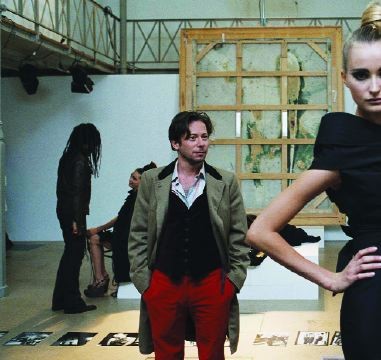The Diving Bell and the Butterfly

When he was in his early 40s, Jean-Dominique Bauby, editor of a French fashion magazine, suffered a massive stroke which left him completely paralyzed except for the movement of one eye. By using this eye and a Morse code of sorts, he was able to dictate a memoir to a caring and patient scribe. It is not a memoir in the traditional sense but a series of observations, a stream-of-consciousness examination of one man’s feelings, random memories and spiritual meanderings as he lies immobile in a hospital outside of Paris.
This memoir, The Diving Bell and the Butterfly, was not an easy book to adapt to film, since its rambling structure lacks the forward motion that allows for plot, conflict and resolution. When I first read the book, my first thought was that it would make a wonderful collage or mosaic, featuring symbolic images that have faded over time. Think Diego Rivera with a final pass by Salvador Dali.
Perhaps this is why it makes sense that the book was adapted for film by Ronald Harwood, a playwright turned screenwriter, who has created a literary scaffolding to support Bauby’s method of storytelling. The film, in French with English subtitles, is directed by the painter and filmmaker Julian Schnabel (Basquiat), who always seems most comfortable when wrestling with fractured narratives and complex issues involving point of view.
In the first few frames of the film we see that much of the story will be seen though the single working eye of the main character, including all the blinks and flashes. This up-close-and-personal technique affords Harwood the opportunity to fill the first act with much-needed exposition. Nurses, doctors and therapists ask Bauby a series of probing questions, the answers to which provide much of the background we need to make sense of Bauby’s own confusion. This segment includes a present-time voice-over which is particularly effective, since it takes Bauby a few minutes to realize that his brain and voice are no longer connected and that the hospital staff is not able to hear the answers and asides that his brain is sending (and that moviegoers can hear).
Schnabel is too restless and inventive a director to stick with this point of view for long. He adds flashbacks to Bauby’s sometimes-joyous, sometimes-empty life before the stroke, highlighted by a vivid memory of an afternoon with his 92-year-old father (played with solemnity by Max von Sydow); fantasy sequences that revolve around the shifting reality of the hospital, often focusing on roads not taken; and dream sequences that range from the erotic to the surreal.
Helping the filmmakers along is a sensitive cast that includes a nice mix of young and old, including the always wily Jean-Pierre Cassel in a dual role as an impatient priest who wants to hear Bauby’s last confession and as a crafty vendor at the shrine of Lourdes who ups the price on a cheesy statue of the Madonna by claiming that it is one of a kind and was blessed by a cardinal.
The center of the story is filled perfectly by Mathieu Amalric (as Bauby), who employs his natural comic touch to full effect in the flashback sequences. This contrast is accentuated by Schabel, who never fails to cut back to Bauby’s twisted face at the most vulnerable moments.
The Diving Bell and the Butterfly, which will be out on DVD in late April, has been called a celebration of the human spirit, but that is too pat and simple a description. The ambitious filmmakers have presented a 112-minute look at life’s vagaries, ironies and tragedies. The film suggests that regret and remorse are part of any existence, no matter how early or suddenly it ends, but that bursts of joy and gentle encounters are also part of the not-so-neatly wrapped package.




